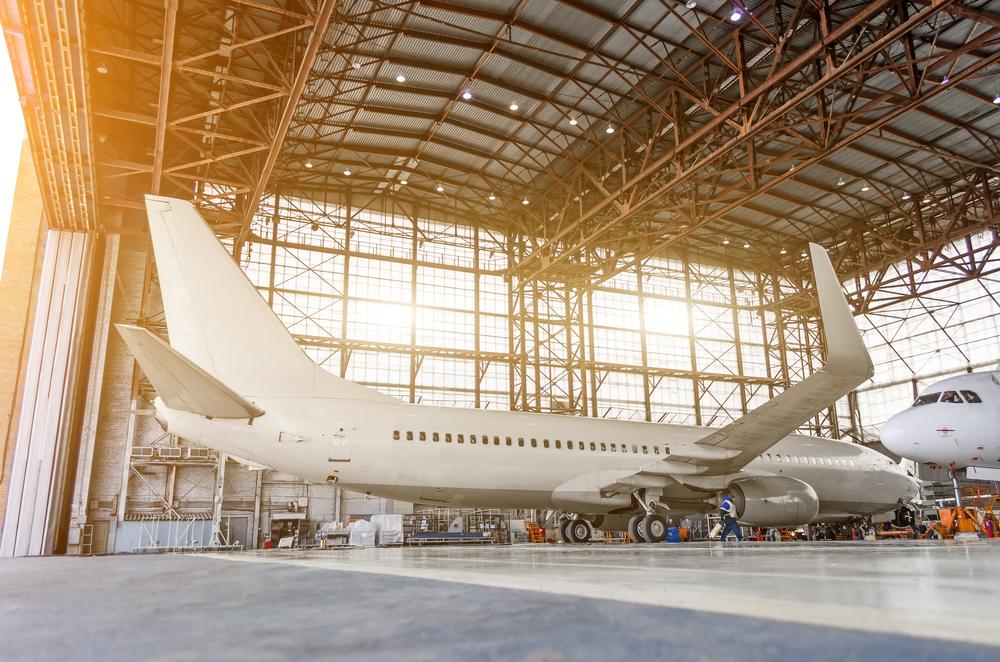he aviation and aerospace industries are full of fire hazards, one of them being the structures in which aircraft and spacecraft are stored: aircraft hangars.
Aircraft hangars are some of the most challenging structures to design for effective fire protection. Fortunately, the National Fire Protection Association (NFPA) has established a standard for them with some best practices to follow. Read on to learn more about aircraft hangar fire hazards and NFPA 409.
Why Are Aircraft Hangars At Risk For Fires?
Aircraft hangars pose significant fire risks for multiple reasons, some of which are:
- They have a large, open layout. To serve their purpose, aircraft hangars need to be big and open. This can make fire and smoke difficult to control.
- They house large equipment. Aircraft hangars store large aircraft and spacecraft, which are at risk for fires themselves.
- They store combustible materials. Aircraft hangars usually have storage rooms where highly flammable materials (jet fuel, chemical additives, etc.) are kept.
About NFPA 409
For the reasons listed above, fire safety experts have long warned of the risks associated with aircraft hangars. All structures must comply with certain building codes and fire protection regulations, but aircraft hangars have their own set of stricter rules in NFPA 409.
NFPA 409 is the National Fire Protection Agency’s Standard on Aircraft Hangars. According to the NFPA, it “helps safeguard life and property through requirements for the proper construction and fire protection of aircraft hangars used for aircraft storage, maintenance, or related activities.”
While the NFPA does not technically have rulemaking authority on its own, its guidance is widely accepted as an industry standard. Many state and local governments base their legislation on NFPA standards.
4 Types of Aircraft Hangars Under NFPA 409
NFPA 409 lists fire protection requirements for aircraft hangars based on four classifications.
Group I
Group I aircraft hangars are required to have at least one of the following features and/or operating conditions:
- Aircraft access door height > 28 ft.
- Aircraft bay > 40,000 ft2
- Ability to house aircraft with tail height > 28 ft.
Group II
Group II aircraft hangars must have both of these features:
- Aircraft access door height ≤ 28 ft.
- Aircraft bay between 12,000-40,000 ft2, following Table 4.1.2 in NFPA 409 (type of construction and single fire area)
Group III
Group III aircraft hangars must be either a row hangar with various units, an open-bay hangar that can store multiple aircraft, or a freestanding unit for one aircraft. It must also have both of these features:
- Aircraft access door height ≤ 28 ft.
- Aircraft bay < 12,000 ft2, following Table 4.1.3 in NFPA 409 (type of construction and single fire area)
Group IV
Group IV aircraft hangars must be a structure built with membrane-covered, rigid steel framing. They must have an aircraft bay larger than Group III aircraft hangars.
Once you’ve determined which group your aircraft hangar is in, you can determine the specific fire protection requirements it needs to meet. Group IV aircraft hangars are generally subject to the least strict requirements, while Group I aircraft hangars are subject to the strictest requirements.
Changes NFPA 409 in 2022
Back in 2021, the NFPA approved some modifications to NFPA 409. These modifications were released in the newest edition of NFPA 409, published in 2022.
No Firefighting Foam Requirement for Group II Aircraft Hangars
The biggest change was that the NFPA removed requirements for foam fire suppression systems in Group II aircraft hangars. This change came from multiple risk-analysis studies, which showed that Group II aircraft hangars didn’t require the ultra-strong firefighting foam systems they were prescribed.
Now, users can use their own judgment to determine the best fire suppression system for their Group II aircraft hangars — with discretion, of course. An authority having jurisdiction still needs to approve their choice.
This is a long-awaited change for many aircraft hangar users because firefighting foam had always been a pricy, messy solution. If their facility doesn’t require it anymore, they can switch to a better-suited method, like a water-based sprinkler and drain system.
Other Noteworthy Changes to NFPA 409
Besides the exemption of Group II aircraft hangars from foam requirements, there are a few other important NFPA 409 changes to be aware of.
- A provision to create an alternative performance-based design process and allow modification for any part of NFPA 409.
- A provision to create a risk-assessment process that allows users to propose alternative fire protection methods, with or without foam.
- Approval of the use of ignitable liquid floor drainage systems (instead of foam systems)
More information on these changes can be found within NFPA 409, linked here.
Why Is Any of This Important?
The fire protection industry is undergoing a massive shift to fluorine-free foam concentrates. While that shift is worth it for many companies in terms of safety, it can be a costly one to undertake. Understanding the changes to NFPA 409 may provide some facilties with an alternate solution to the costly replacement of foam concentrate, when applicable and safe.
Protect Your Aircraft Hangar & Stay Up to Date on Changing Regulations with Vanguard
Want to know more about NFPA 409 and how these changes may affect your aircraft hangar’s fire protection plan? Vanguard Fire & Security Systems can help. We’ll inform you of the latest information regarding NFPA 409 and evaluate your aircraft hangar for compliance.
Give us a call at (800) 444-8719 or contact us online today.

